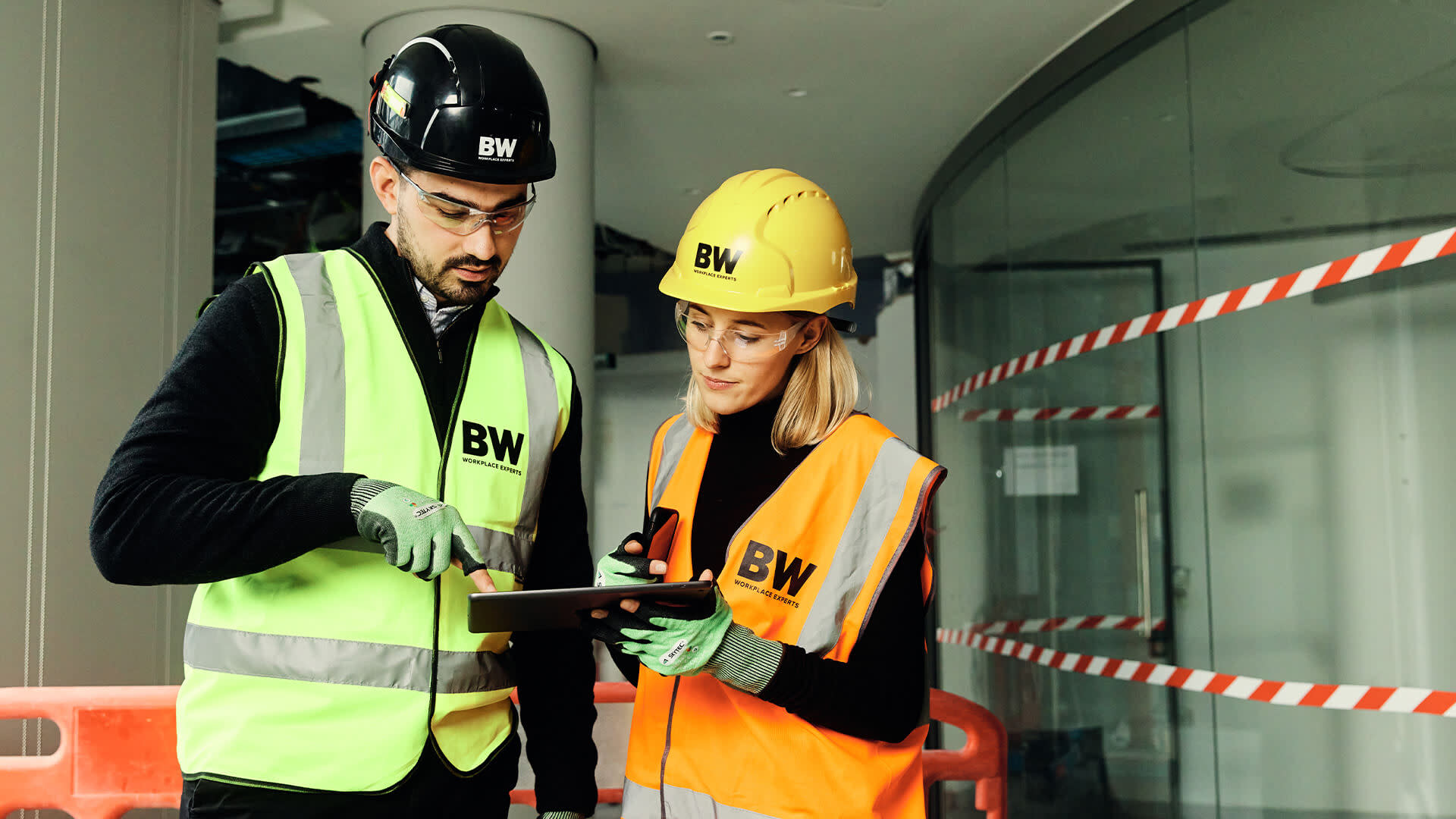
Article
The Next Generation Can Solve the Construction Labour Crisis
An eager group of energised and dedicated construction workers can help shape the future of the construction industry.

Over the coming decades, the construction industry has a monumental opportunity. The global population will continue to increase which will impact available resources and create a necessity for further development within communities around the world. Construction’s ongoing labour shortage could adversely affect this global initiative.
This is not an inevitability to which construction must resign itself. There is a “workforce in the wings” and reaching this audience cannot be done overnight. We must first understand some of the data behind the next generation and the current labour shortage across the industry.
Chapter 1
The Flight of Labour Presents an Opportunity
Construction has been dealing with an increasingly chronic labour shortage since the housing bubble-inspired “Great Recession” and its global aftermath. Between 2007 and the present day, a jaw-dropping number of workers have departed the global construction industry—through the natural attrition of retirement, and periodic economic disruptions. This has left the construction industry in a dire situation, faced with over half-a-million-worker shortage. Construction had been playing catch-up with those labour losses for years, when COVID-19 struck, it further complicated the labour picture. With the rapid increase of COVID-19 cases in March 2020, construction projects around the world were idled for months as nations sent their workers home in a reflexive attempt to rein in the contagion while also facing supply chain issues. Globally, jobs lost across all sectors were estimated at some 255 million—this according to the UN International Labour Organization (ILO). Struggling economies are needing to be rejuvenated with major capital investment. This plan is on a collision course with the COVID-fueled Great Resignation, whose effect has been to drastically reduce the availability of workers needed to see these capital projects through. For some industries, this might not have a big impact outside of the specific industry at hand. However, a slowdown in construction has the potential to halt growing cities, shut down busy buildings and disrupt the processing of goods we can’t live without. Despite substantially different market conditions around the world, data from many different regions consistently report that construction as a vocation has yet to make its case to the general public. Improving the public’s perception of construction may be—in part—helping them see more clearly what they’ve always known; that construction builds the world that we live and work in every day. Meeting construction’s labour shortage is, curiously, both a challenge and an opportunity. There is an immediate challenge to reboot both the construction workforce and the global culture’s perception of what construction “is” beyond bricks and mortar. A new cohort is waiting to be pitched, and there is work for them. Devising the means to compel this generation into construction could yield a fertile new industry outlook far beyond these immediate labour concerns.

Chapter 2
Construction Constrained: There are More Job Openings Than People to Fill Them
At this moment, the global construction sector has an incredibly bright future if it can resolve its perennial labour issue.
It has been predicted that the construction sector could outpace perennial powerhouse manufacturing as a catalyst to global economic growth in the 2020s, an extraordinary circumstance. This sunny picture is overcast by the global construction labour shortage. No matter where you are, labour challenges are at every turn and aren’t going away anytime soon in construction.
In the U.K., 53% of surveyed home builders can’t find the workers they need to build their homes.
An Associated General Contractors of America survey found that 73% of respondents view worker shortages as their biggest concern in 2022.
Germany’s construction and civil engineering sector reports 25.5% of companies are being impacted by a shortage of skilled labour.
Spain estimates they have 700,000 fewer workers than needed to execute their roster of EU-funded construction projects.
In the Middle East and North Africa, migrant workers largely comprise the construction sector. When COVID struck, many of those workers were forced to return to their home countries.
Australia is experiencing a skilled workforce squeeze across all sectors, with tradespeople comprising about 35% of that shortfall.
Canada has seen a 158.4% increase in job vacancies in the construction industry in the last two years.
In Singapore, an acute labour shortage—combined with dramatically rising materials costs and COVID—has caused 1,538 construction firms to go out of business.
Malaysia recently renewed its MoU with Indonesia, Malaysia’s majority provider of labour. This despite 12.5% of Malaysia’s youth being unemployed.

Chapter 3
Global Unemployed Youth Are Construction’s Workforce-in-Waiting
The global collection of workers that comprises the next generation is needed to fill empty roles in skilled trades but most do not consider construction as a viable career option. The construction industry needs to devote resources and energy to a program that aligns construction with the younger community’s professional aspirations. Construction’s labour shortage has a number of variables that ladder up to the overall problem, but a big one is the attractiveness of the industry overall.
DEVOTE RESOURCES AND ENERGY TO A PROGRAM THAT ALIGNS CONSTRUCTION WITH THE YOUNGER COMMUNITY’S PROFESSIONAL ASPIRATIONS.
Over half (56%) of contractors report a high degree of concern about their workers having adequate skill levels, up six points from last quarter and 20 points year-over-year. How can contractors be more confident in the next generation and help develop their skills? By fostering a spirit of education, technology and innovation and changing the perception of the overall industry.

Chapter 4
Gen Z’s Desire for Work with Meaning Leads Straight to the Jobsite
Generation Z—primarily defined as those born between 1997 and 2012—are today between 9 and 24 years old. Of the world’s 7.7 billion people, 2.47 billion belong to Generation Z, making up over thirty percent of the global population. It’s true that any categorical description of the global population blurs critical distinctions between backgrounds and cultures. It is noteworthy, though, that on the issue of global youth, surveys show interestingly global commonalities in Gen Z across cultures. These include feeling stressed all or most of the time (46%) and not satisfied with their societal impact (57%). Young people around the world are not as dissimilar as their scattered geographies would suggest. Gen Z members are amenable to pursuing post-secondary education that isn’t college—61% said they thought a "skill-based education," such as coding bootcamp, nursing school, or similar options, was a sensible choice. Similarly, 45% said it "makes sense" to consider an education program of two years or less. This is significant and suggests higher education is not a reflexive choice with the next generation cohort but one of a range of pragmatic options seen through real-world, personalised ROI. Construction is a largely under-discussed option for this group. In fact, despite the data that suggests the incoming workforce is looking for "skill-based education" and "education programs of 2 years or less", construction still has not been able to capture the imagination and recruitment of this workforce. The construction industry as a brand is undergoing a sea-change—an intentional cultural shift that increasingly aligns it with the social concerns and top-of-mind career choices for this new generational workforce. The construction culture is in the throes of its own global project, and hasn’t been shy about saying so.
Construction work—whose product is publicly visible for generations, crucial to people’s daily lives, and in the throes of R&D-driven technological reinvention—seems a perfect fit for a cohort interested in making a lasting contribution to society and the world.
These identifiers can all be seen as arguments supporting a career in the construction industry. Construction work—whose product is publicly visible for generations, crucial to people’s daily lives, and in the throes of R&D-driven technological reinvention—seems a perfect fit for a cohort interested in making a lasting contribution to society and the world.
Global Gen Z is anxious to secure work that has meaning and purpose. Who is strategically making the case for construction as a career? How can we make construction a welcoming industry for everyone, regardless of their background, age, or geography? Our industry’s authentic aspiration is to be welcoming to everyone—an inclusivity that is right and good, and which just incidentally harnesses the unstoppable power of collaboration to get the global job done. There is a massive amount of work ahead. Who better to accomplish it than the next generation of young construction professionals?
